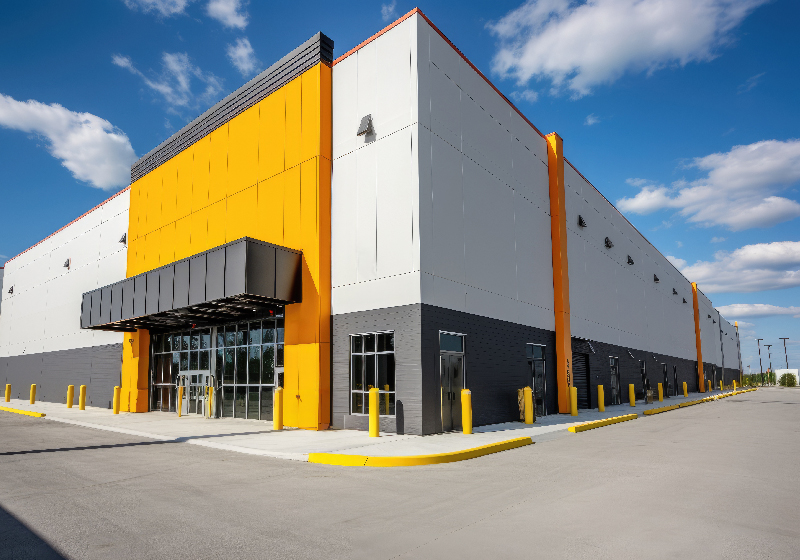When running a business, owners are constantly looking for ways to diversify their income so that sudden changes in market demand don’t result in a death knell for their operation. For those with an entrepreneurial spirit, looking for ways to diversify their personal income often leads them into property investment. But how do new investors know how to make the right investment and avoid being saddled with a property that becomes more of a hassle than an asset?
In property investment investors often compare residential and commercial purchases. Commercial properties are a great option for investors due to their higher returns compared to residential properties, their longer lease terms, and the diverse approaches available like with Triple Net Leases. (If you’re still torn on residential vs. commercial property investment, real estate investment experts over at FortuneBuilders have a great breakdown on the pros and cons of each model!)
For new investors looking to get into the space of commercial property investment, identifying a strong deal can feel like a big task. To get started strong, here are some key considerations.
Learn About the Industry
Before even thinking about making that first purchase, prospective investors have plenty of research to do about commercial real estate in general, and then plenty more about their own unique market. Although it’s easy to find broad-stroke statements about the current state of commercial properties (for example, industrial properties are the highest performing investments, and retail is struggling), markets everywhere vary. For that first investment, it’s best to try and compare properties in as similar a situation as possible.
Commercial property value is primarily determined by factors like usable square footage, age and condition, location, and profitability of its tenants. Although finding a perfect match may be difficult, investors should try to find another property that matches as many of these traits as possible to get a better idea on an accurate valuation. Even similar properties in a nearby town can vary considerably in value due to unforeseen circumstances.
Just as when entering any industry, finding a successful mentor is key to anyone looking to overcome a learning curve. Mentors are people who have experience with successful investments and managing a portfolio, ideally in a similar area and with the sorts of properties.
Familiarize Yourself with the Stats
After becoming more confident with the way commercial property investments realistically work, investors will need to get acquainted with three key statistics: Net Operating Income, Capitalization Rate, and Cash-on-Cash Return. Each of these figures are used to identify a smart investment, and they can build off of one another.
A property’s Net Operating Income (NOI) is the value of a property’s revenue (rent, parking, laundry, etc.) after deducting expenses related to operating the facility (maintenance, insurance, utilities, taxes, etc.). If an investor takes values from a full year’s estimated totals and they see a positive NOI, then they may have found a property worth pursuing.
After calculating a property’s NOI, investors can use this figure to determine the Capitalization Rate as well (also known as the Cap Rate), which helps determine a rate of return. Although this rate shouldn’t be the sole factor to determine whether an investment is worthwhile, many investors use this as a quick and easy point of reference for their properties. Cap Rates are calculated by dividing the NOI with an appraised value, and can also be used to determine when a return should be expected.
Borrowing is a very common factor that needs to be tracked in a commercial property investment. This is why the Cash-on-Cash Return metric is commonly relied upon to determine whether an investment was or was not successful, and it’s considered one of the most important commercial real estate calculations. Put simply, this percentage is calculated by dividing a property’s NOI, by the total dollar amount invested. The higher this percentage, the better!
Understand Your Own Skills and Preferences
While these figures and general principles should set investors in the right direction for their next investment, it is far from the full set of considerations. Every sector of commercial property investment and management has their own unique quirks and concerns, meaning the most successful investors will be able to play to their own strengths, rather than rely on a generic gameplan.
Some might be interested in investing and adding value to a property to make their profits, while others are more confident in relying on appreciation. Many investors find a home specializing in multi-family properties, but considering how well the industrial sector has been performing, investors with the know-how and comfort could see considerable return there as well. Model your investments based on your unique strengths to match a promising property, and you’re sure to accomplish your goals!
Nothing cripples a strong commercial investment like unexpected maintenance issues. Start with a commercial property inspection to keep your investments secure!



